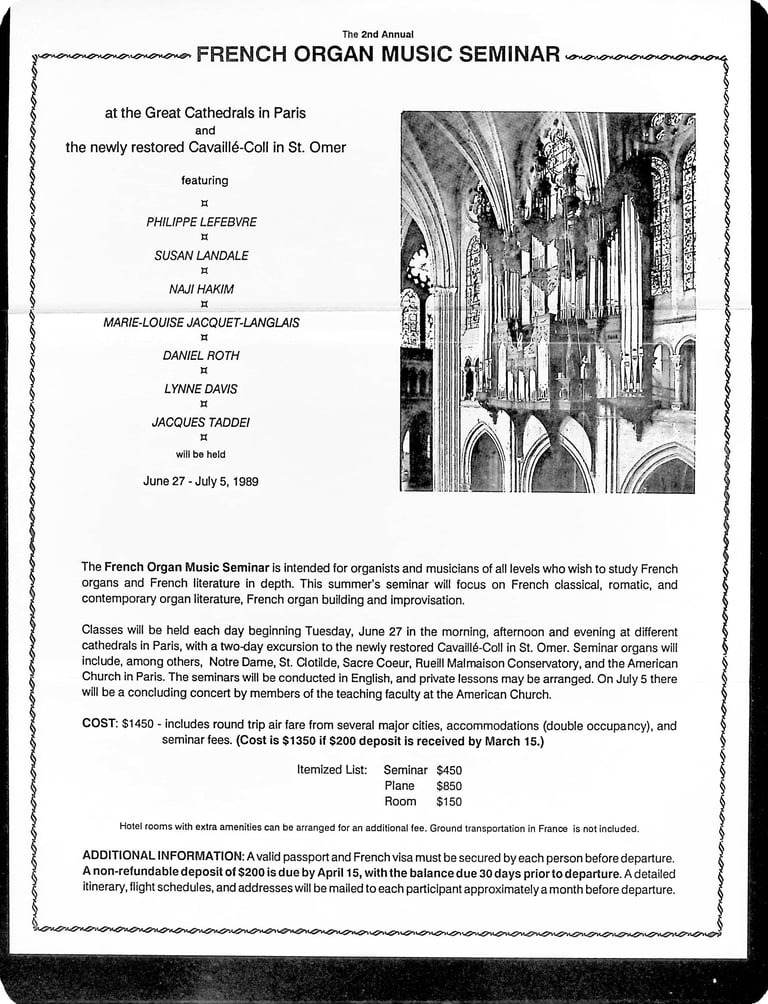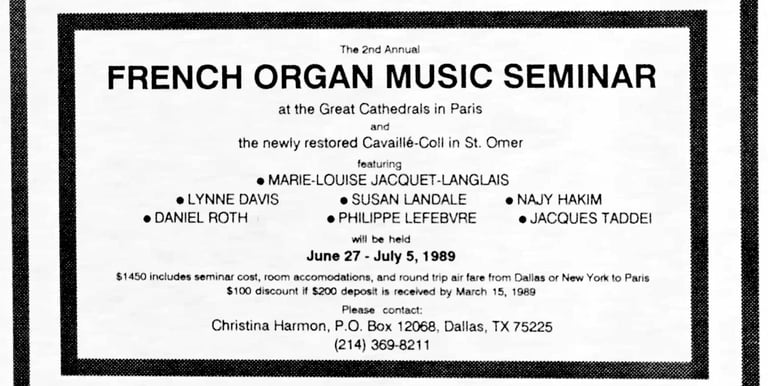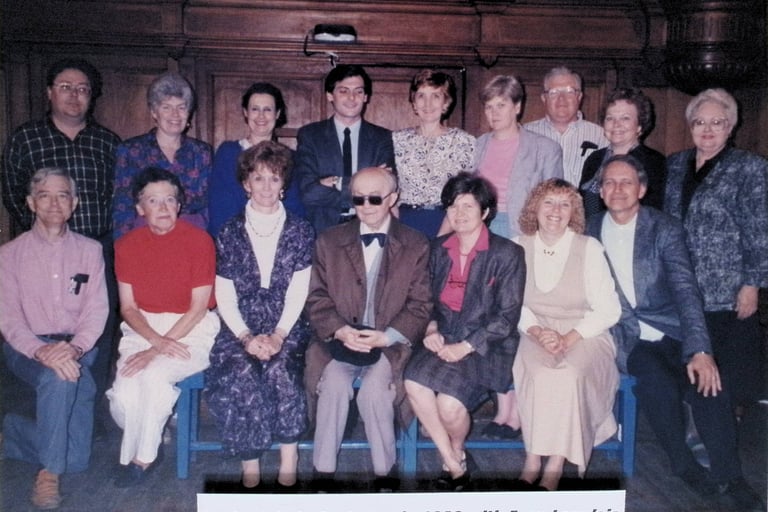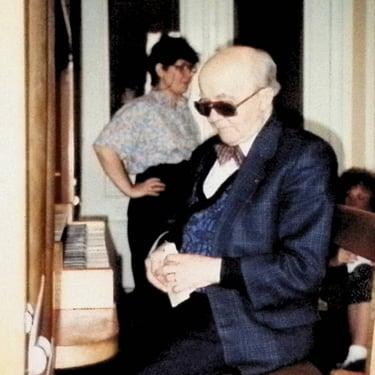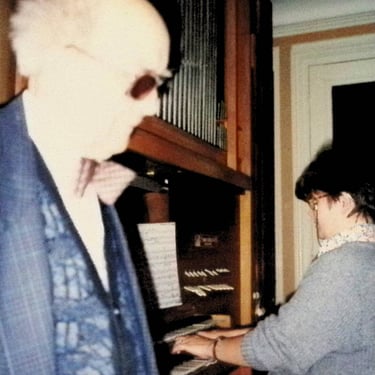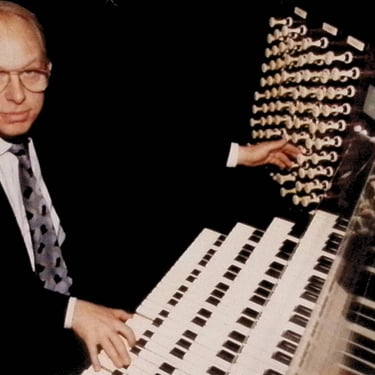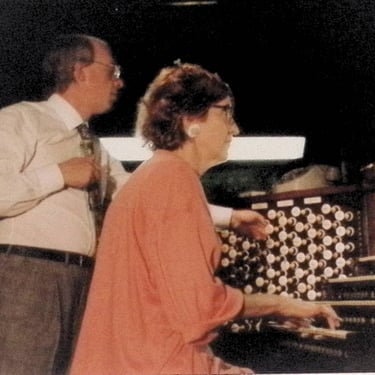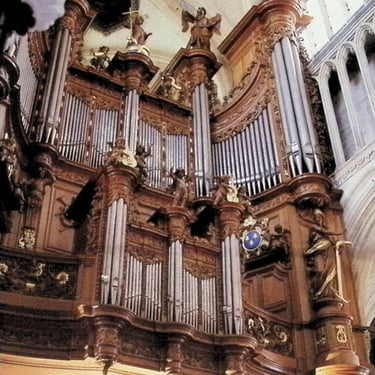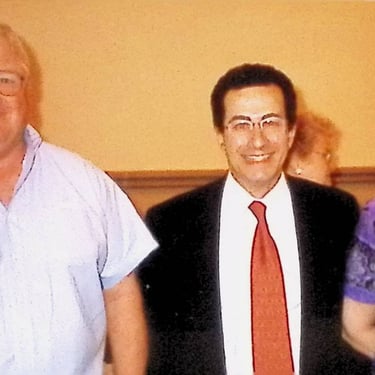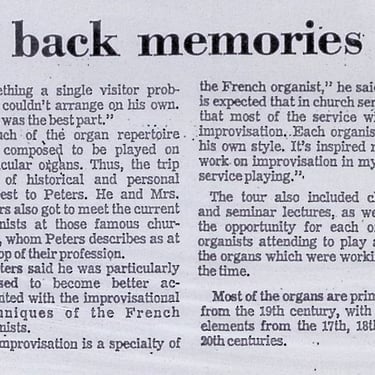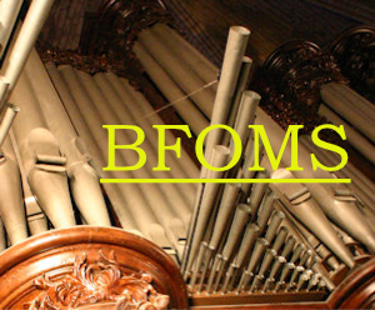FOMS 1989
Step counting brings back memories
There are 84 narrow steps leading up to the organ loft at St. Sulpice. And Dale and Juanita Peters can tell you how many steps lead to the organ lofts of Paris’ St. Vincent de Paul, the American Church on the Quai d’Orsay, St. Clotilde, Eglise Reformee du Saint-Esprit, St. Denis, Sacre Coeur, and Notre Dame, as well as at St. Omer in Elanders. Step counting isn’t the true forte of Dr. Peters, associate dean of the University of North Texas and organist at the First United Methodist Church in Denton, or his wife Juanita, on the voice faculty at UNT. Step counting did, however, form part of the memories the couple brought back from a French Organ Music Seminar in Paris this summer: a small part. More important to Peters was the opportunity to associate place, instrument, composer, and repertoire. For Mrs. Peters, it was an overwhelming emotional experience. “We were particularly fortunate in the arrangements (Christina Harmon, seminar organizer) made, meeting the most important organists in those historic churches” Peters said. “It was something a single visitor probably couldn't arrange on his own. That was the best part.” Much of 'the organ repertoire was composed to be played on particular organs. Thus, the trip was of historical and personal interest to Peters. He and Mrs. Peters also got to meet the current organists at those famous churches, whom Peters describes as at the top of their profession. Peters said he was particularly pleased to become better acquainted with the improvisational techniques of the French organists. “Improvisation is a specialty of the French organist,” he said. "It is expected that in church services most of the service will be improvisation. Each organist has his own style. It’s inspired me to work on improvisation in my own service playing.” The tour also included clinics and seminar lectures, as well as the opportunity for each of the organists attending to play all of the organs which were working at the time. Most of the organs are primarily from the 19th century, with some elements from the 17th, 18th, and 20th centuries.
